Hunting the Qalqilya Jawaafa
PeriBlog XIV: Qalqilya, Palestine
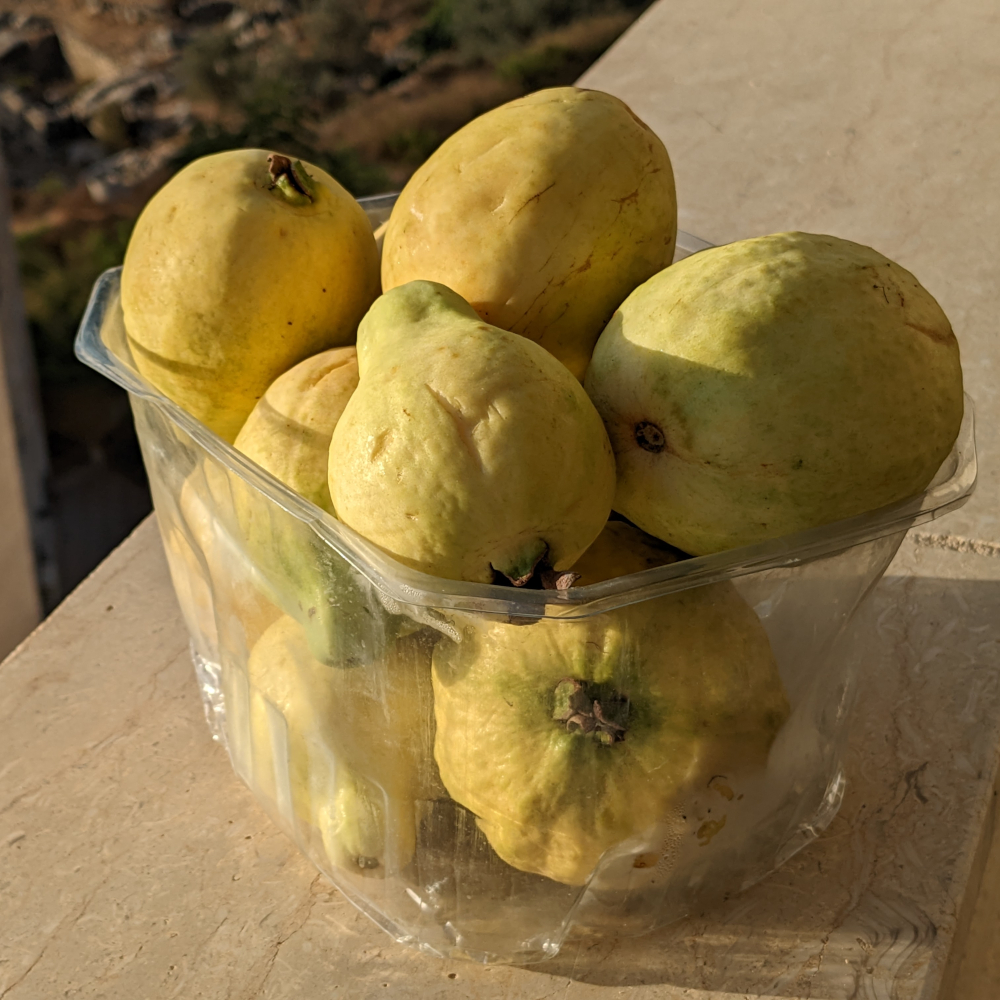
A bin of Jawaafa, Qalqilya’s greatest export
Jawaafa? Jawaafa?
Jawaafa!
Our orange Service, the seven passenger van carrying us back to Ramallah, scoots to the side of the road. What is it? An Israeli roadblock? Some kind of trouble ahead?
The three men sitting in the middle of the van jump out and rush a roadside vegetable stand. They pore over little bins of a green fruit that bears a weak resemblance to an unripened pear.
A moment later they are clambering back into their seats. No jawaafa. “Too expensive,” said the man on the left. “Better prices down the road.”
We rip back out onto the highway in search of a fairly-priced jawaafa.
The World’s Largest Open-air Prison
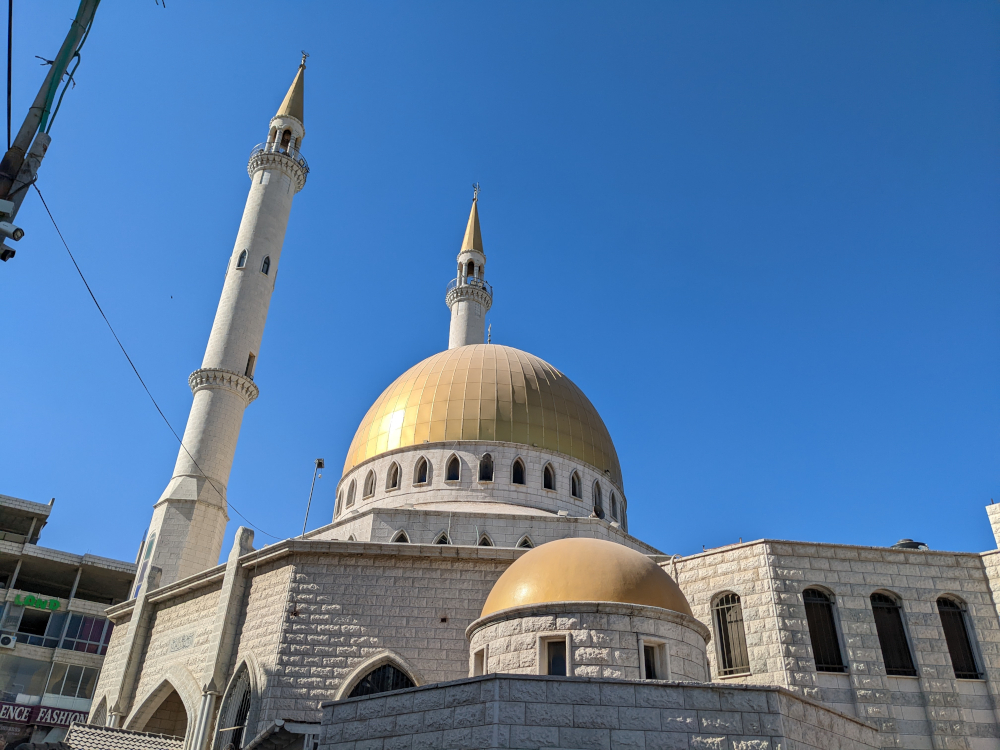
Sultan Muhammed Al-Fateh Mosque, Qalqilya
We had become involuntary participants in the great jawaafa hunt through our presence in Qalqilya, a northwestern Palestinian city. Qalqilya is an odd territorial appendix, jutting deep into Israeli territory. Home of oranges and the legendary jawaafa (guava) it is a city under siege with little to recommend it, apart from the warmth of its residents.
Qalqilya is surrounded on three sides by Israel’s West Bank wall, a massive concrete structure that nearly encircles the city. Erected during the Second Intifada in 2004, the wall restricts the movements of the city’s residents. There are only two exits—a northwestern checkpoint leading into Israel, and a highway that runs east, linking the city to the rest of the West Bank.
During times of heightened tension, Israel closes both routes, trapping the Palestinians in Qalqilya. “We are like a Pepsi bottle,” one resident tells me. “There is only one exit [to the east] and Israel can put the cork in the bottle any time they want.”
It is a difficult place to live. “The Guinness Book of World Records has named us the ‘World’s Largest Open Air Prison,’” another resident affirmed. “You can look it up.”
I was unable to verify that claim, but one can feel the oppressive gaze from every side, the unwelcome constriction of the Pepsi bottle. Fenced in by the wall, the city has no place to expand. Property prices are at a premium, and those who do choose to live here know that food, water, and their ability to travel can be curtailed at any moment.
Nevertheless, even beneath Sauron’s gaze, life continues and the people of Qalqilya retain a brave optimism about their lives.
Qalqilya Days
We visited the city four times in our first two months. It is a ninety minute Service ride north of Ramallah. Mary must teach at a branch campus every week, and Qalqilya was first on the list.
The trip home at the end of our first day proved rather eventful. After leaving the city, we rolled onto the highway and began to pick up speed. Suddenly, a grinding, thumping sound exploded from the rear of our Service.
We shuddered to the side of the highway and our driver climbed out to check the tires. A minute later he returned. After a quick consultation on his cell phone, he wheeled the limping Service back into traffic. Trailing the stench of melting rubber, we ground down a long hill into Al Funduq, a small Palestinian village.
Guess we didn’t have a spare.
We stopped in front of a tire shop, an open storefront that huddled behind cylindrical piles of dusty road shoes. A dour mechanic slouched out, considered our plight, exchanged fast Arabic and a dubious look with our driver.
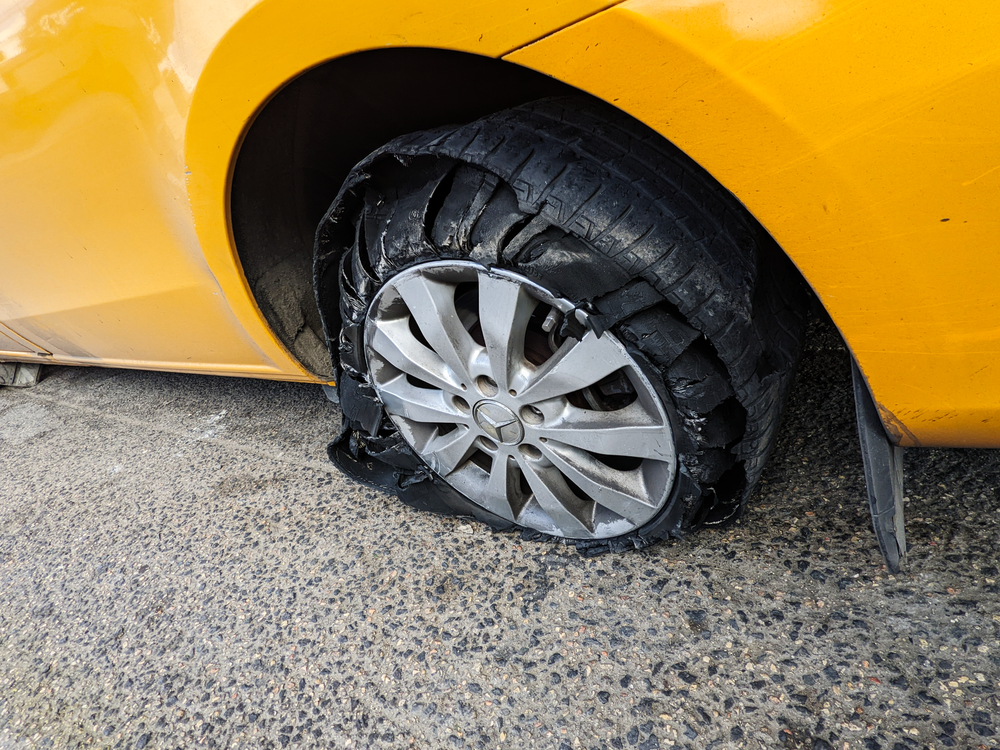
It’s dead, Jim.
Our tire was shredded. The rubber was destroyed and I wouldn’t write a warranty for the steel wheel that had taken a beating over the last mile. The mechanic walked out into traffic, and as cars and semi-trucks rushed past, clearing him by no more than an inch, he began to jack up the left side of our Service.
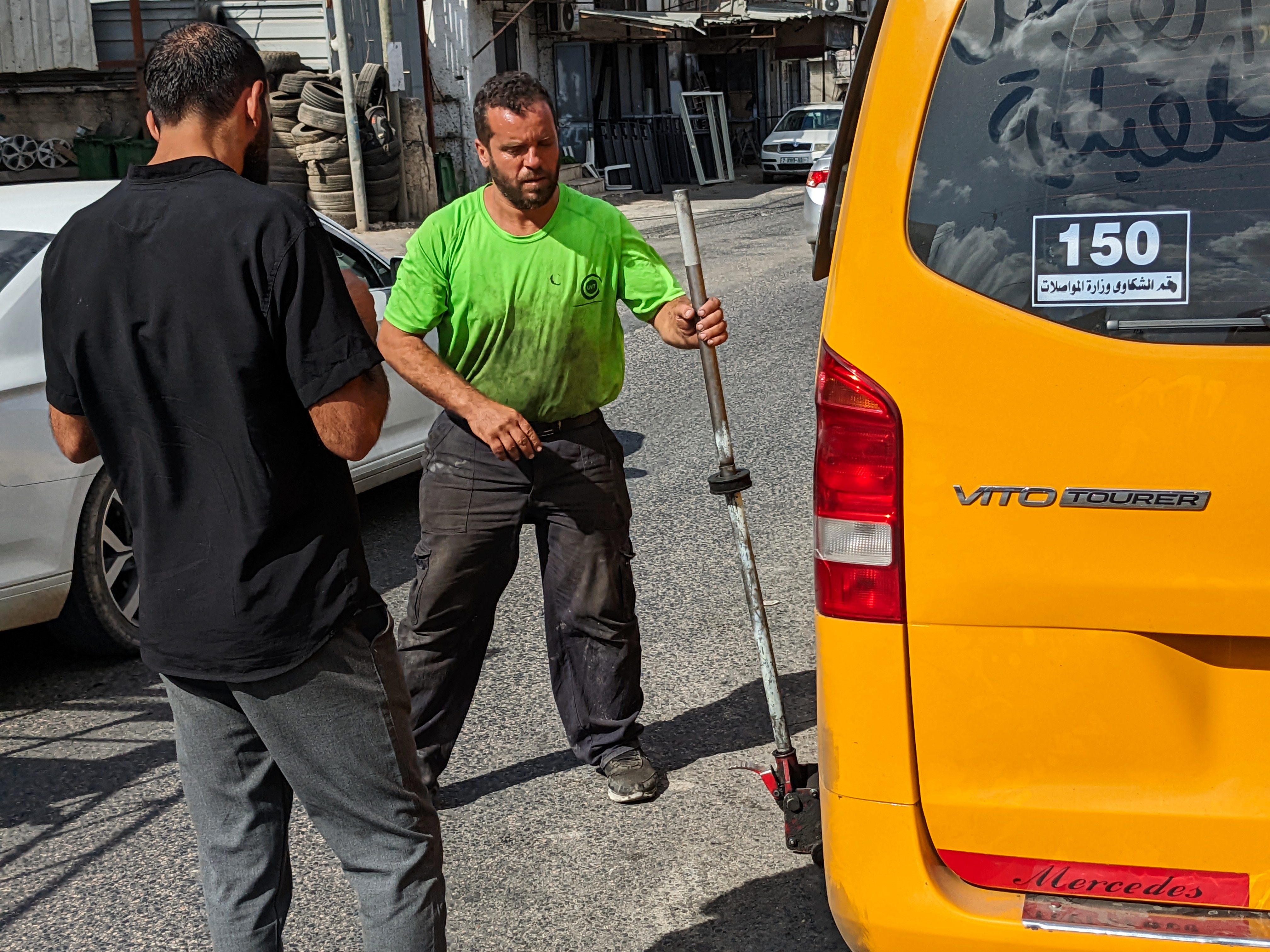
Tire repairs, while you wait
I watched in disbelief. I wasn’t the only one. An ancient sage, sun-burned and heavily wrinkled, shuffled down the broken sidewalk, and stopped to stare. The difference is that he found me, rather than a roadside tire change, the more extraordinary sight.
“Where are you from,” he asked in Arabic.
Time to try my limited grasp of the language. “Anaa Ameerki,” I replied—I am an American.
My interlocutor looked dubious. “Iraqi?”
A fellow passenger jumped in, interpreting on my behalf. After a feverish exchange, my translator turned away in frustration. “He thinks you are an Iraqi. He won’t be convinced otherwise.”
Well good, I suppose. I decide to take that as a sign that I am blending in rather than sticking out like a sore American thumb. A promising development—unless the Palestinians don’t like Iraqis…
The moral of the story: there’s always something interesting happening on the road. The tire guy found a piece of rubber to fit our wheel, strapped it on, blew it up, and after only thirty minutes, we were on our way.
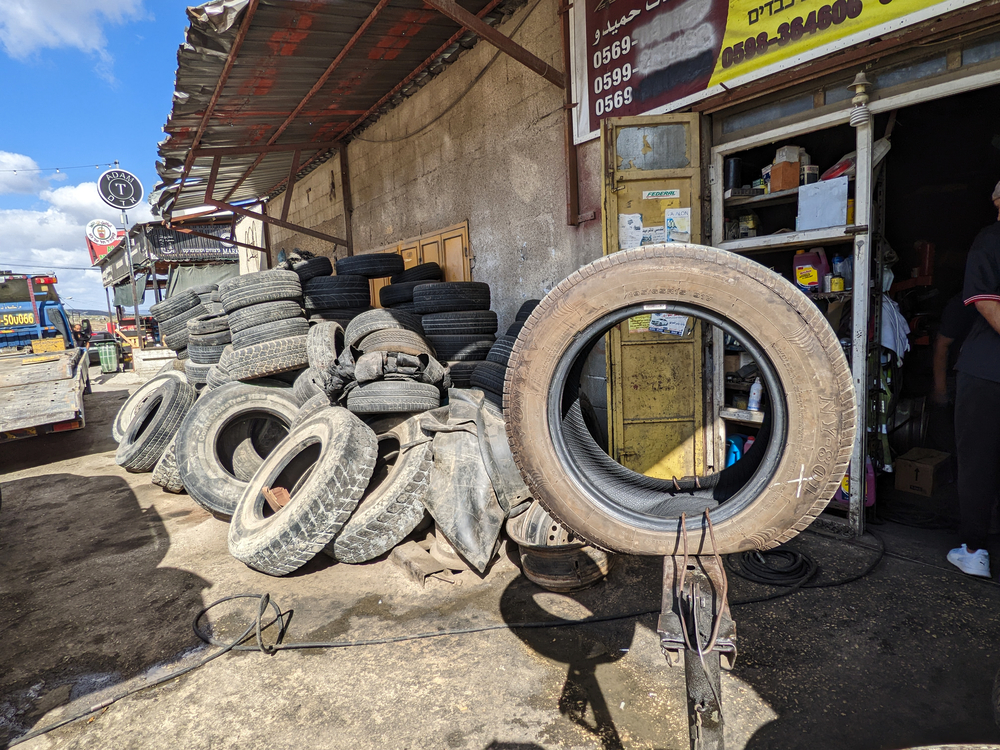
Ye Olde Tire Shop
About Town
Wikipedia tells me that people have lived in Qalqilya since the Neolithic age. Of course occupancy does not necessarily correlate with excitement or dramatic events. Qalqilya exists on the periphery of excitement. Even the city’s tourism board struggles to find something to publicize. “The only bona fid[a] attraction in Qalqilya is its zoo...[however] this particular zoo clearly suffers from a lack of funding and resources—which is no surprise—and some of the animal cages are on the small side, to put it diplomatically.”
Rousing.
But don’t despair: Qalqilya has hidden pleasures. There is always jawaafa.
Jawaafa
The city is a leading producer of jawaafa. We had the good fortune to meet a local man whose garden was dedicated to the marvel of jawaafa. It was practically a jawaafa shrine, a lush patch of ground filled with a selection of jawaafa trees. There are, evidently, several types of jawaafa. I think we tried every variety.
I doubt if I ever will become a jawaafa connoisseur—I lack the jawaafa madness. The fruit tastes pleasant enough, but a core of hard seeds lurks just beneath the pulpy exterior. Bite too deeply and you will be picking shards of jawaafa seeds out of your teeth for an hour.
That's all right. My ambivalence toward the fruit means that there will be more for everyone else. That’s a good thing—Qalqilya is jawaafa-mad, an observation that is clearly proven by this giant jawaafa display.
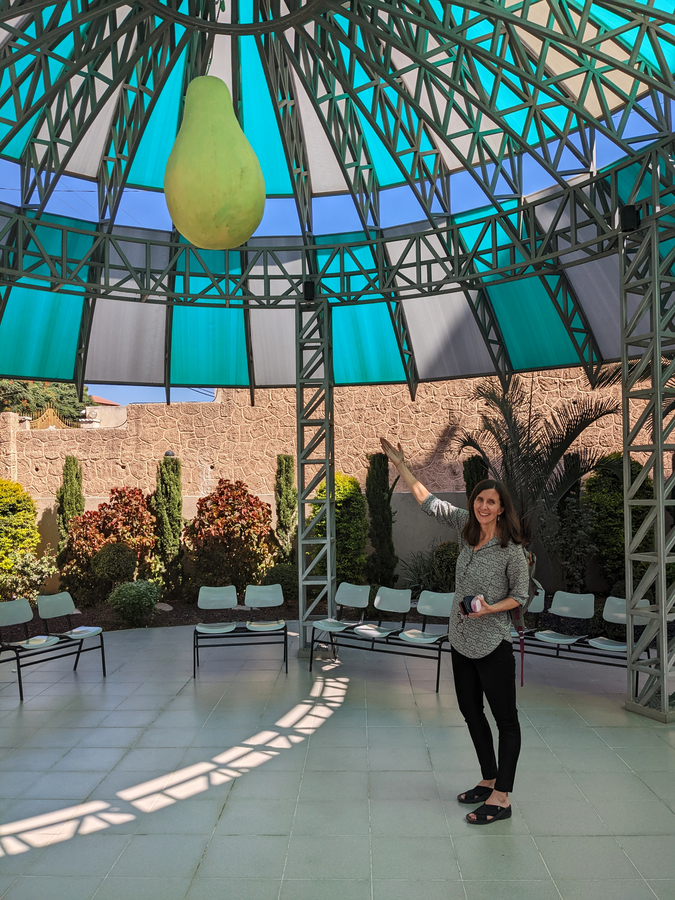
At the Jawaafa Altar
If you are enjoying this series, why not subscribe to Richard's monthly newsletter, What's New in Old News? The Peripatetic Historian is on the road, roaming the world and compiling fresh adventures. Don't miss out. Click here to join the legions of above-average readers who have already subscribed.